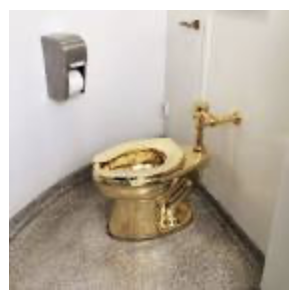And they expect to build out an entire solar/wind energy infrastructure in 8 years?
/The toilet — just one loo in 150 square feet of space — is projected to cost $1.7 million, about the same as a single-family home in this wildly overpriced city. And it won’t be ready for use until 2025.
Assemblymember Matt Haney (D-San Francisco) secured the $1.7 million from the state for the toilet after hearing “loud and clear” from the community that families needed a bathroom. The plumbing is already there, added when the plaza was constructed six years ago, but there was never money for the actual bathroom. Until Haney stepped in.
The former San Francisco supervisor said the Recreation and Parks Department told him the going rate for one public bathroom was $1.7 million so he secured the full amount, not questioning the pricetag.
“They told me $1.7 million, and I got $1.7 million,” Haney explained. “I didn’t have the option of bringing home less of the bacon when it comes to building a toilet. A half a toilet or a toilet-maybe-someday is not much use to anyone.”
True, but instead we have a toilet-maybe-in-more-than-two-years that could have paid to house a family instead. So why is a public bathroom so insanely expensive, and why does it take so long to build? A joint statement from Rec and Park and the Department of Public Works, which will work together to build this extravagant bathroom, pointed to several reasons.
For one thing, the cost to build anything in San Francisco is exorbitant. The city is the most expensive in the world to build in — even topping Tokyo, Hong Kong and New York City. We’re No. 1! Even for places to go No. 1.
Like everywhere, construction costs have risen 20% to 30% in the past couple of years due to global supply chain issues and the rising costs of fuel, labor and materials. But like always, there’s a certain preciousness to the process in San Francisco. (Just look at the years-long, ongoing quest to design and manufacture bespoke city trash cans.)
“It’s important to note that public projects and their overall cost estimates don’t just reflect the price of erecting structures,” the statement said. “They include planning, drawing, permits, reviews and public outreach.”
For a toilet? Apparently so.
An architect will draw plans for the bathroom that the city will share with the community for feedback. It will also head to the Arts Commission’s Civic Design Review committee comprised of two architects, a landscape architect and two other design professionals who, under city charter, “conduct a multi-phase review” of all city projects on public land — ranging from buildings to bathrooms to historic plaques, fences and lamps.
The web-page describing that process states the point is to ensure “that each project’s design is appropriate to its context in the urban environment, and that structures of the highest design quality reflect their civic stature.”
Sorry, kid. I know you’ve got to go, but have you considered the context of the urban environment?
The project will then head to the Rec and Park Commission and to the Board of Supervisors. According to the city’s statement, it will also be subject to review under the California Environmental Quality Act. Then, the city will put the project up for bid.
“Once we start the project, we’ll have a clearer timeline, but we expect to be able to complete the project in 2025,” the statement read.
The city said the $1.7 million estimate “is extremely rough” and budgets “for the worst-case scenario due to the onerous demands and unpredictable costs levied by PG&E,” the possibility code requirements could change during the project and in case other unexpected circumstances come up.
Californians can’t build any public project anymore at a price even approaching sanity, whether it’s a $113 billion high-speed train going nowhere, to $775,000 apartments for LA drug addicts, to trash cans and public toilets.
And this problem isn’t confined to California; the Blue States and cities and our Democrat-run federal government all suffer from self-inflicted paralysis. Joe Biden will demonstrate this perfectly today when he visits Pennsylvania to stand in front of the Fern Hollow Bridge and brag about his “Rebuilding America” plan. The (very small) Fern Hollow Bridge collapsed 9 months ago, and remains closed. The state and the feds are hoping to have it fully repaired by December, “with traffic allowed soon after”. The irony of Biden choosing a failed government project to celebrate his success as the leader of the most powerful nation on earth will only be outweighed when, later today, he’ll appear in support of John Feddermen, with the slogan, “John’s as mentally fit as the President of the United States”.
It doesn’t have to be that way: down in Florida, Governor DeSantis Tuesday announced the rebuilding and reopening of the three-bridge Sanibel causeway; originally estimated at a 6-month completion date, they got it done in 3 weeks, just as the Pine Island Bridge was repaired within a week of its being destroyed by the same hurricane.
By interesting coincidence, it’s DeSantis’ competitor who provides the other example of competence, this time by the private sector:
Donald Trump first came to my attention in 1986, when, after NYC had spent six years and $12 million trying and failing to rebuild Central Park’s Wollman Skating Rink, Trump stepped up and offered to get it done at his cost: $3 million, with completion promised in six months. Mayor Koch wisely accepted the offer, and Trump delivered, 2 1/2 months ahead of schedule and $750,000 under budget. Even though DeBlasio shamefully cut off all Trump ties to the rink, it still stands as a rebuke to progressive rule and a testament to private enterprise .

